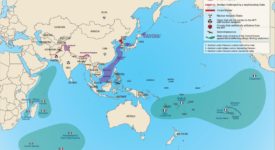US President Donald Trump and European Commission President tamed the heat over the looming trade war following their meeting in Washington. The Wednesday (25 July) meeting suggested that both sides would hold off on further tariffs while they keep discussions open on their different points of views and priorities. The two leaders said they would start discussions on removing the tariffs and subsidies that both sides imposed on each other earlier this year.
“We agreed today, first of all, to work together towards zero tariffs, zero non-tariff barriers, and zero subsidies on non-auto industrial goods,” said Mr. Trump, with Mr. Juncker by his side. Under the agreement, the EU would start buying more liquefied natural gas and soybeans from the United States and the two sides would begin a “dialogue to reduce differences on regulatory standards between the two economies”. Both sides also agreed that the US would not immediately impose tariffs on European cars. There was no deadline set for the deal but Brussels and Washington confirmed that it would be contingent on negotiating in good faith.
To complete the deal though, the EU will have to find a consensus within the 28-country bloc. The ultimate goal of the White House is to reduce trade barriers to lower the $152 billion US deficit in merchandise trade with the EU. In response to the threat of automobile tariffs, Detroit-based Big Three automakers lowered their 2018 forecasts and each admitted that fallout from US tariffs on aluminum and steel was weighting on their bottom lines. The annual trade between the EU and the United States in goods and services is worth more than $1 trillion.







